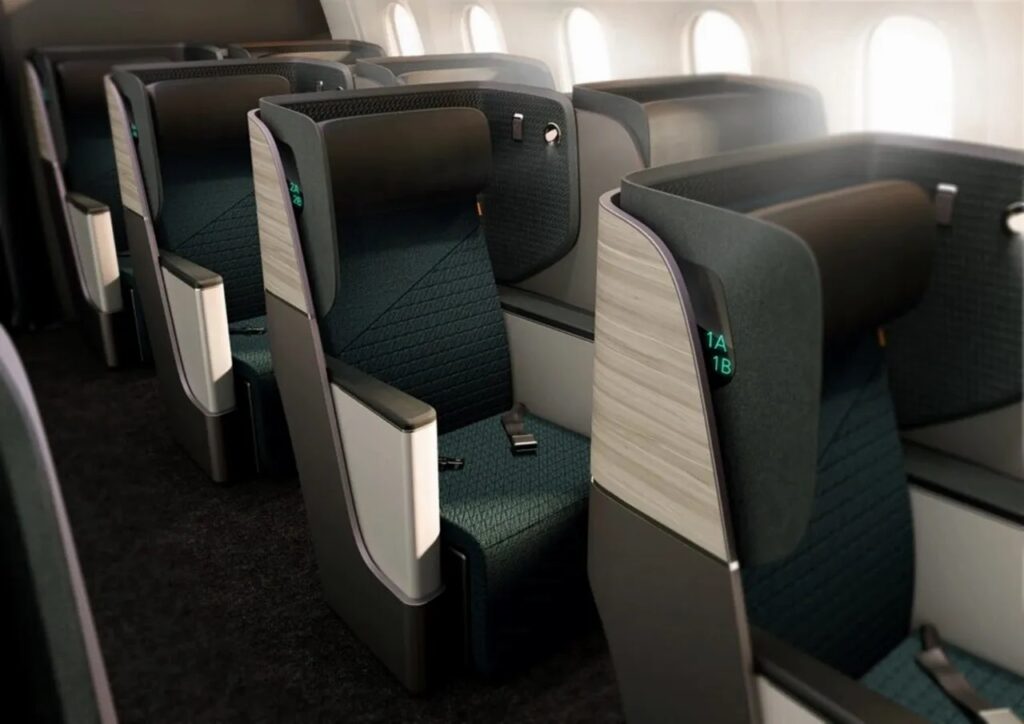Meet the hottest airplane seat as aviation re-starts
Contributors are not employed, compensated or governed by TDM, opinions and statements are from the contributor directly

Yes! Premium economy. The two names have always sounded a little weird to me since I was used to three classes on the airplane. But these seats between economy class and business class on international flights were heating up even before the pandemic, and as we all start to travel again once the vaccine rolls out and the number of vaccinated people grows, forecasted for the end of this years, these seats are set to be a must-fly for many travellers.
So, why man travellers are setting the wish to fly in Premium Economy?
First, the economic crisis means that business class travellers will be “trading down” to premium economy — whether that’s people flying for work whose travel policies are being tightened or upmarket leisure travellers who are feeling the pinch on their wallets but don’t fancy feeling it at their knees or elbows.
Second, lots of frequent fliers will have points or miles to burn after a year of reduced travelling, and with those straitened travel policies that land business travellers in economy, we’ll likely see some of them upgrading themselves to the slightly better seats with their points. That is alongside restrained leisure travellers looking for a bit of a splurge.
Third comes to the fact that, after more than a year of Covid-19 social distancing, we are just not psychologically used to being too close with other people anymore. It is going to feel very strange to think about doing that on a plane, so the extra space in premium economy will be welcome.

But what is premium economy? Essentially, it’s a bigger seat with a little upgraded inflight service. The most important part of what a premium economy seat offers the passenger is a significant upgrade in terms of comfort when compared to economy. Premium economy seating typically provides around 5 to 10 inches of additional legroom, a more generous recline with a leg rest and an enhanced entertainment experience with a much larger screen.
Seats are also around two to three inches wider, and there are usually one to two seats fewer in each row: eight in a Boeing 777 or Airbus A380, for example, compared with 10 seats in most economy classes.

Premium economy is found, metaphorically and on the actual aircraft, between the increasingly spacious and luxurious business classes and the increasingly less spacious and less luxurious economy classes.
Airlines offer premium economy passengers’ access to more priority services such as free seat reservations, priority boarding and increased luggage allowance. The services that are offered vary according to the airline.
Travellers traditionally have approached premium economy from one of two directions, either upgrading from economy or downgrading from a business.
Before the pandemic, the premium economy performed well for leisure passengers who wanted a slight treat or for cost-conscious large and small businesses. On long haul routes, there was a tendency for passengers travelling in business class to fly premium economy during the day and return on a fully flat bed in business class on the night flights. This practice was also becoming quite popular with people with disabilities, including myself.
But, where business class seats have become more spacious and economy class seats have shrunk both in legroom and elbow room, how have premium economy seats changed since their were introduced.
The short answer is they haven’t, until recently with Emirates, Qatar Airways, British Airways and few other airlines launching better and bigger seats with more privacy. The other changes have been the improvement of inflight entertainment and connectivity features such as on-demand inflight touchscreen entertainment, power sockets, Wi-Fi internet and more.
So, what is the future of the premium economy? It will continue to be attractive to the very tall, the elderly, leisure and business travellers and anybody else for whom economy class presents too much of a physical challenge.
But, looking forward, a considered selection of those aspects of business class that really matter to travellers today, such as a little more space and greater privacy, a more technologically informed approach to comfort, enhanced connectivity or a more distanced boarding experience, might be applied again to create a new way of travelling, perfectly tailored to the ever-evolving needs of travellers.
Ultimately, we should all bear in mind that aviation is a battleground for differentiation. If one airline can offer or claim to do something better, different or novel compared to their competitors, it provides a commercial advantage.


Comments are closed.